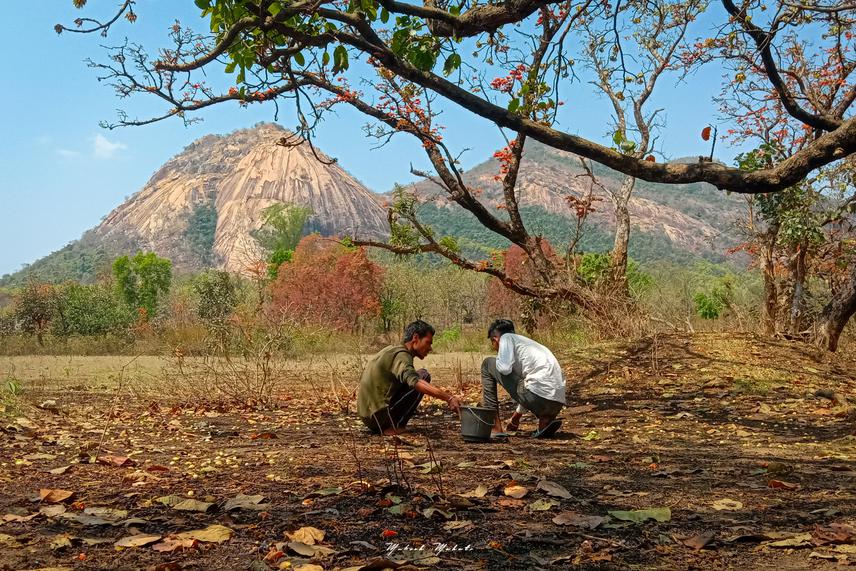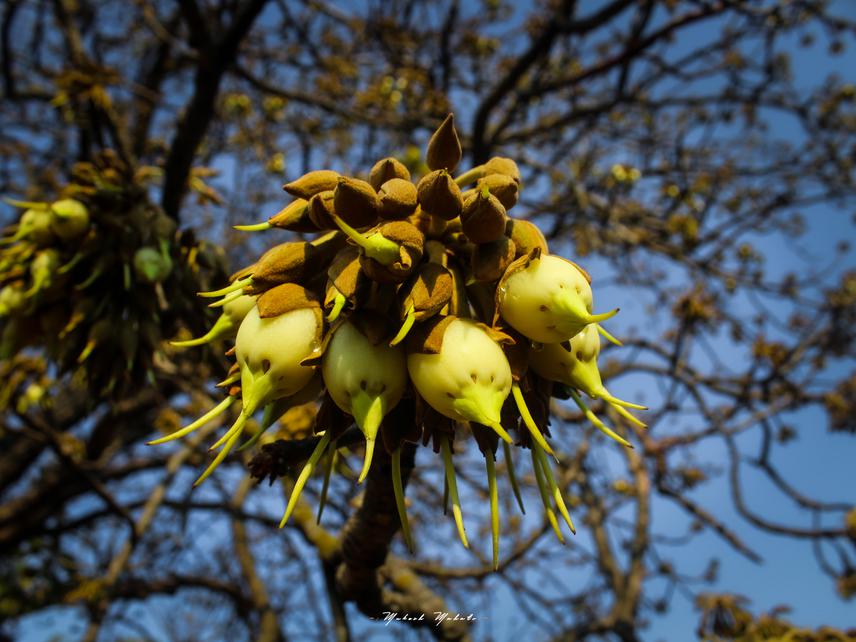Abhijit Dey
Other projects
23 Aug 2022
Mahua Tree, the ‘Kalpavriksh’ of Indian Deciduous Forests: Causes of its Decline and Way Ahead for Conservation and Sustainability in Chota Nagpur Plateau, India
Mahua is one of the crucial trees of the Tropical Deciduous Forests (TDFs) of India and has a high economic and sociocultural importance for the indigenous communities who live by these forests. The story is no different for the tribal communities of the study area - the Chota Nagpur Plateau (CNP) of eastern India.

Locals busy collecting mahua flowers. ©Mukesh Mahato.
This proposed work is a continuation of my previous work where we found that the population of young mahua trees in this region of CNP is alarmingly low, reflecting a declining trend in the mahua population. Furthermore, the price of mahua flowers, pivotal for the livelihood of the local people, has decreased by almost 75% here in recent years. Since most of the trees are privately owned, as a consequence of thisdecline, the owners started selling the trees for timber. This will have repercussions for the local ecosystem and the economy if not addressed immediately.

Bunch of mahua flowers. ©Mukesh Mahato.
With this background, this work aims to:
1. Understand the socioecological processes that have been shaping the mahua population which changes with the land cover. The adult trees are concentrated around human settlements but the young trees are lacking. Inside the forest, the number of mahua trees is much lower and finding an old-growth tree is difficult. Understanding this distribution pattern in light of the historical and current socioecological processes can provide insight into how best to improve its future.
2. Initiate a community-led enterprise to rejuvenate the local mahua economy. The recent plunge in the mahua flower price disrupted the mahua-dependent livelihood in this region and the existence of the trees is threatened. The solution, as tested in a few corners of India, is to initiate a community-led small-scale enterprise to produce value-added mahua flower-based items like sweets, pickles, cookies etc. to sell to a wider consumer base.
3. Launch a website as an outreach mechanism. Though mahua is an important species and livelihood resource for rural communities living in the dry forests of India, the common people are largely unaware of the significance of mahua trees. A dedicated website along with its social media handles will strive to popularize mahua and mahua-based products, create awareness for the conservation of mahua trees and sustenance of mahua-based livelihood.
Header: Sun-dried mahua flowers. ©Mukesh Mahato.